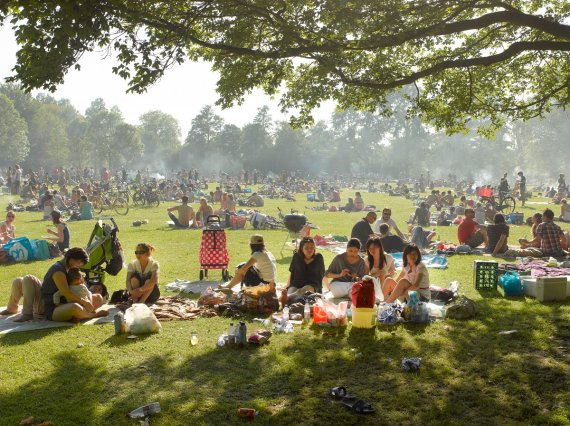Kloek’s work was commissioned by Staatsbosbeheer. At present, one in five Dutch people are immigrants, while nature conservation is primarily a ‘white’ pursuit. As well as conducting group discussions, Kloek carried out an extensive survey among more than 1000 young adults aged between 18 and 35. The results are striking. In the last three months just one in three of the respondents had spent some recreational time in a rural environment outside their home town or city. The fi gures for visits to urban green spaces were higher: at some time half had been to the city park to sit, walk, cycle, barbecue or engage in some other recreational activity
However, the differences between the young people themselves are also considerable. Chinese Dutch people, for example, seldom use green space. Only 30 percent had visited a green space in their town or city and just 20 percent, a green space further afi eld. Twice as many Dutch people of Turkish and ethnic Dutch origin (40 percent) had spent recreational time outside the city. In the city Dutch people of Turkish origin take the cake: no less than 70 percent of the young people said they had visited a green urban site in the last three months.
And so, says Kloek, ethnicity plays a role. ‘What’s relevant is not the fact that you are an immigrant, but your cultural background. You cannot lump all immigrants together. But ethnicity is not the only factor. Everyone has several identities. You are not only of Turkish or Chinese origin, you are also a young person or, say, a nature-lover. All these various identities determine how you think about nature and how you experience it.’
Kloek’s work also demonstrates that nature conservation organizations could certainly do with more diversity. Of the Turkish-Dutch respondents, only one percent were members of a nature conservation organization and none had done voluntary work in the last year. In fact, half of them couldn’t name a single nature conservation organization. ‘That’s worrying,’ says Kloek. For that matter, one in eight ethnic Dutch respondents couldn’t name a nature organization either.
Despite this lack of familiarity and active involvement, two out of three young people do think that nature conservation is important. Which leads Kloek to conclude that nature conservation organizations have their work cut out for them to turn that positive feeling into active engagement. ‘Staatsbosbeheer, for example, is busy setting up a multicultural youth council,’ says Kloek. ‘The council will act as a sounding board when, for example, nature areas are being designed. This can help to create a support base and to increase involvement in nature conservation.’

